
by Sandra Gulland | Nov 3, 2019 | Adventures of a Writing Life, The Game of Hope, Work in Process (WIP) |
Tomorrow I turn 75. That will certainly be a milestone.
Which of course made me curious about the word milestone. As with nearly all historical explorations, it proved to be exceptionally interesting.

Milestones were originally stone obelisks – made from granite, marble, or whatever local stone was available – and later concrete posts. They were widely used by Roman Empire road builders and were an important part of any Roman road network: the distance travelled per day was only a few miles in some cases. — Wikipedia
One of the main characters of my WIP goes on a journey overland to London, following ancient Roman roads. Might she see a milestone? But of course.
NaNoWriMo
Yesterday was another milestone of sorts: I began a NaNoWriMo push to (try to) write 2000 words a day. Day one: check. Day two: check. (With only a little cheating.) Tomorrow will no doubt be more challenging, but that’s allowed on the day one turns—OMG—75!
Along with writing, I invariably get lost in research. Delving into the Tudors is just a bit crazy-making! At every turn, there’s a fascinating story, at every turn, a mystery to solve—mainly, of late, trying to figure out Queen Elizabeth I’s exceptionally complex family tree. Here’s a crude and over-simplified “chart” that took hours to make.

I’ve been scrambling a bit, trying to sort out my system—and naturally returning to a system I’ve often used before. I record the day, time and word count in a notebook first thing, along with the word count I must meet that day.
At the end of the day, I write the word count met, along with the appropriate smiley or frowny face. For some reason, I find this system motivating. Approaching the end of the workday, I will calculate how many words I have yet to go, and then I go for it—crash, bang, come hell or high!
Mid-day I realized that the notebook I was using was too small so I went looking for a better one. I found one that had only been used a bit four years ago while working on a revision of The Game of Hope. It was moving seeing my scribbled notes. it feels like a decade ago to me now.
Meanwhile, Day of the Dead
Day of the Dead is a delight in Mexico, a beautiful tradition. Here are a few photos from Halloween, when people all over town were getting made up in fanciful ways.

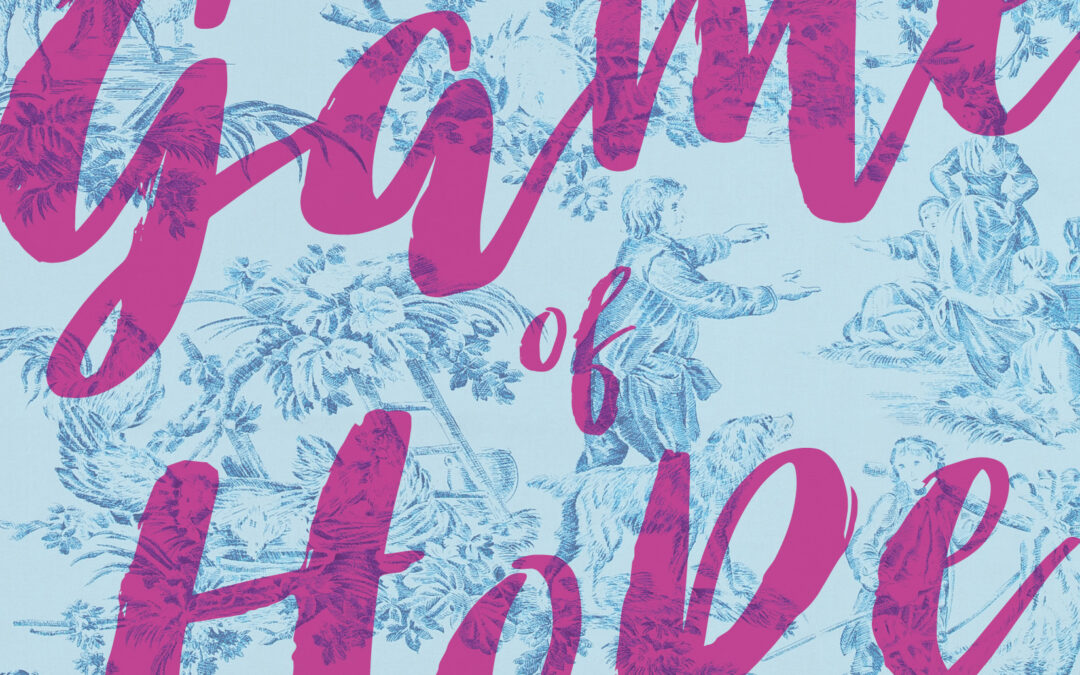
by Sandra Gulland | Sep 23, 2019 | Adventures of a Writing Life, On Research, The Game of Hope |
I’m pleased to announce the beautiful Canadian paperback edition of The Game of Hope. It’s fresh and fun to have a new cover. The first person to email me* a selfie holding the book will be sent an autographed hardcover edition.
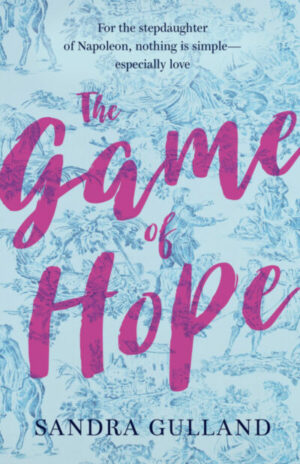
In other news, I’ve just returned from a three-week trip to the UK, researching the early life of Queen Elizabeth I and the village of Adisham, where I’ve set my other heroine, young Molly the falconer.
Researching falconry at The Hawking Centre was a highlight of my trip.
In one month, shortly after Canadian Thanksgiving, Richard and I will be heading south to San Miguel de Allende for the winter. Once settled, I plan to NaNoWriMo-write the rough first draft of Molly & Bess (working title). I’m not yet sure if it’s one novel or two. This will be one way to find out.
*sgulland AT sandragulland DOT com
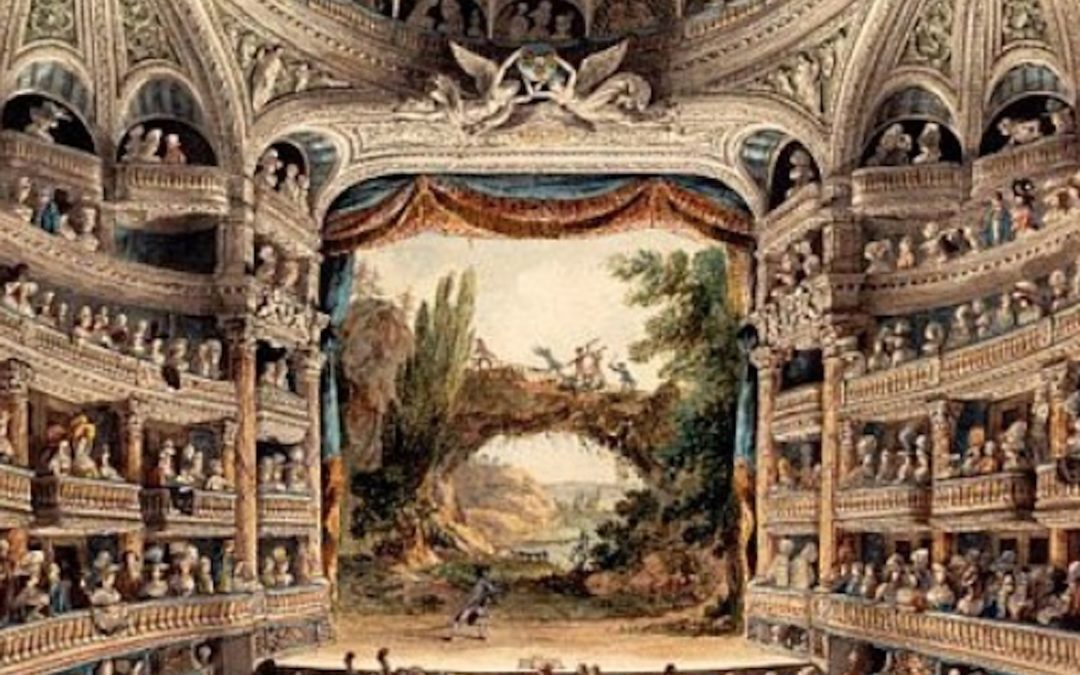
by Sandra Gulland | Nov 18, 2018 | Baroque Explorations, On Research, The Game of Hope, The Shadow Queen |
In preparing for a video presentation of The Shadow Queen to book clubs here in San Miguel de Allende, I’ve been revisiting the world of that novel — especially the magical world of 17th century theatre in Paris. Rereading this blog post, written long ago, I was captured once again by the story of Molière and his much younger wife Armande. Theirs was a story I was planning to write before I got spirited away into the world of The Game of Hope.
And so here, to share, is my post from 2009, spruced up with wonderful visuals. (Thank you, Internet!)
I’m doing a great deal of research right now into the theater world of 17th century France. My focus is on Claude de Vin des Oeillets, the daughter of actors, but along the way I’ve been encountering many wonderful characters. So many stories!
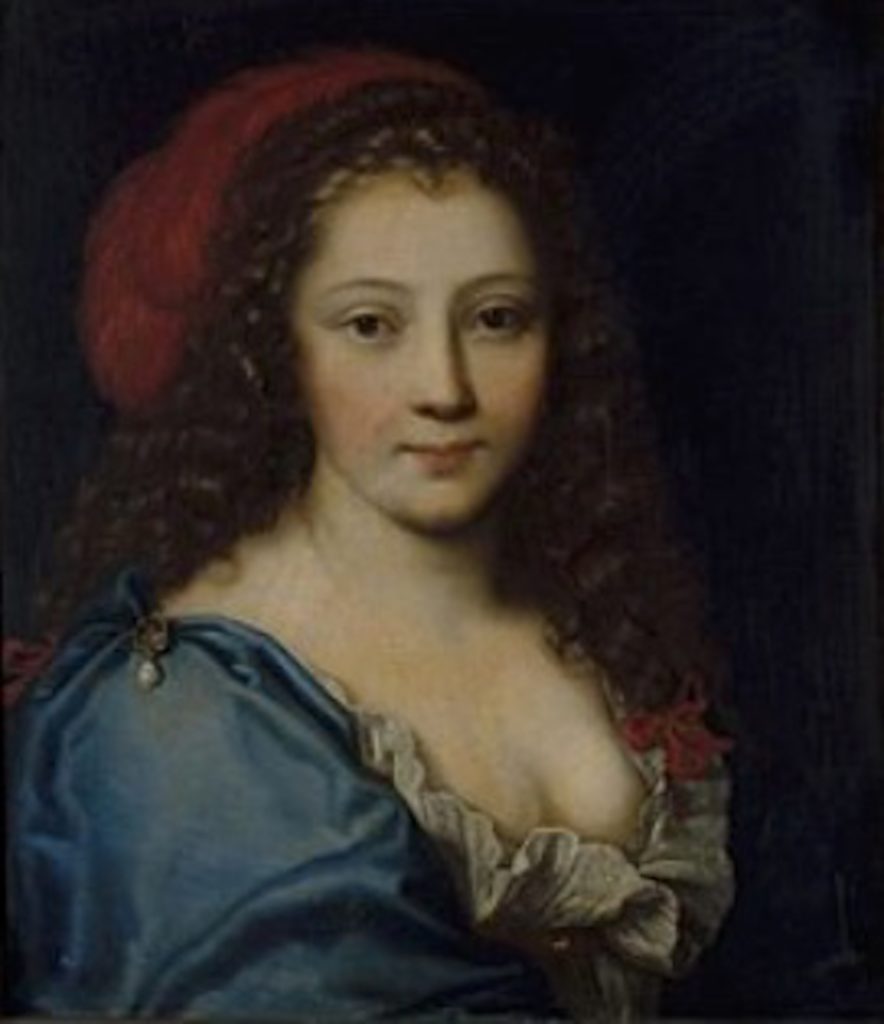
Molière’s wife Armande, 23 years his junior
One, in particular, is that of the actress Armande Béjart, Molière‘s wife. He was 40 when they married, she only 17. She had known him all her life, and must have regarded him as something of a father and teacher. Indeed, he had taken charge of her education as a child.
They were a miserable couple. It is said that Armande was heartless and vain. She was considered a frivolous, giddy flirt, and was quite likely unfaithful (possibly to Lauzun, and possibly to the comte de Guiche); certainly Molière was consumed by jealousy. After the birth of a son, and then a daughter, they lived apart, yet they continued to work together closely on the stage. Molière could simply not stop doting on her . . . and neither could the public. She was a brilliant actress, and Molière was inspired to write many roles specifically for her.
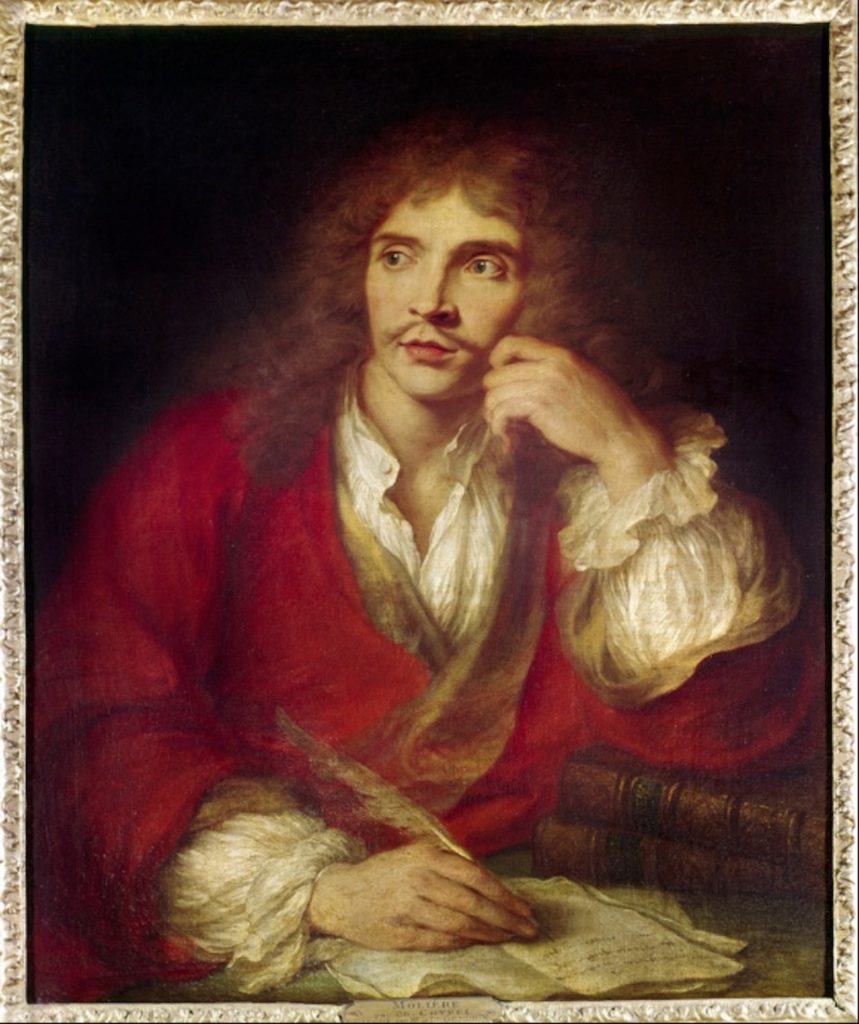
Molière
A mutual friend eventually persuaded Armande to reconcile with her increasingly consumptive and love-sick husband. She did, putting him on a strict meat diet, yet he continued to decline. On the day of the 4th performance of “The Imaginary Invalid,” in which he starred, Armande begged him not to play. He refused, knowing how many depended on the performance for their livelihood.
At the end of play, Molière (ironically playing the part of a hypochondriac) had a convulsion, which he tried to disguise with a harsh laugh. The curtain was hastily lowered and he was carried to his house. Always a comedian, he said on his deathbed: “I have set a detestable example. From now on, no playwright will be content until he has killed an actor.”
After her husband’s death, Armande proved to be anything but giddy and frivolous, fighting passionately for her husband’s right to be respectfully buried by the church (a fight she sadly lost), and then running Molière’s theatrical company with astonishing confidence and aplomb, making a number of difficult decisions that proved to be very successful. He would have been pleased.
I love her saucy attitude, but most of all I love how talented she was, and how capable she proved to be as a widow. Someday I hope to write about her.
[Note: This post was originally published on Hoydens and Firebrands, a website of women who write about the 17th century.]

by Sandra Gulland | Jul 28, 2018 | Adventures of a Writing Life, Promotion, Publication, The Game of Hope
A good review can leave a writer depressed if it’s obvious the reviewer hadn’t read the book. Even rave reviews can be frustrating if there isn’t one quotable line. And then, of course, there are the “condemn with faint praise” reviews. Worse is the despair of not having any reviews at all.
It’s hard not to get emotional!
But then there are the supremely gratifying reviews by readers who get it. Nothing could be finer.
I felt this way about the review of The Game of Hope by Grace O’Connell in Canada’s publishing magazine, Quill & Quire. There are a number of quotable quotes, but this is my favourite:
Gulland has built a career writing historical fiction for adults, including a bestselling trilogy about Joséphine Bonaparte (Hortense’s mother). Her pitch-perfect balance of lush period details and character-driven narrative shines again in The Game of Hope.
I love this too:
In Gulland’s hands, Hortense’s life and history, as dramatic as it is, never overwhelm her character. Her friendships, her music, and her mother remain steady anchors. Even with Joséphine and Napoleon as supporting characters – ones so historically charged that they could easily take over a narrative – the story remains firmly Hortense’s.
What’s especially nice about this is that the reviewer understood some of the challenges of writing biographical historical fiction, likely because she is an author herself. :-)
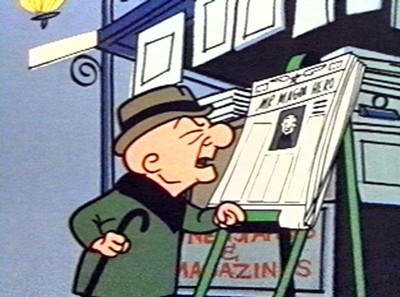
by Sandra Gulland | Jul 27, 2018 | Adventures of a Writing Life, Audible Editions, Promotion, The Game of Hope |
I’ve been visually challenged this summer. Two cataract surgeries have made reading difficult. That’s a problem for a writer! For a time I felt like Mr. Magoo.
Having worn glasses for over 50 years, it felt strange not to be wearing them. Plus, there was this thing called vanity: frankly, I look better in glasses. I had a reading/speech on The Game of Hope to give to a fairly large crowd, so (confession) I ordered plain $15 frames on Amazon, just for the “look” of them.
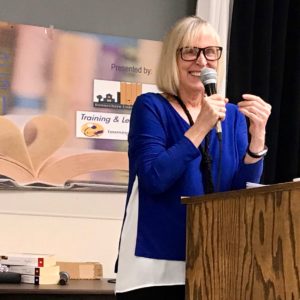
Ah, that was better! I felt more like myself.
I printed out my reading in a large font so that I could read it and highlighted dialogue.
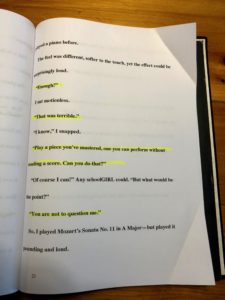
(I bend the corners of the pages to make them easier to turn.)
As a visually challenged writer, I’ve been exploring using dictation when writing on a computer. I’m doing this now, in fact. Que padre!
Fortunately (or not), I’m not the sort of person to throw things out, so I went through a drawer of old eyeglasses and found a pair that made light reading and computer work more manageable.
Even so, reading is a strain, so I’ve been “reading” audible editions like crazy — and loving them. I will be putting up a post about a number of outstanding titles soon.
All in all, these adjustments have led to interesting discoveries. Colors are so much more vivid now. The blues! I might feel like Mr. Magoo when it comes to reading, but I’m more like Alice in Wonderland in this beautiful, many-hued world.
SaveSave
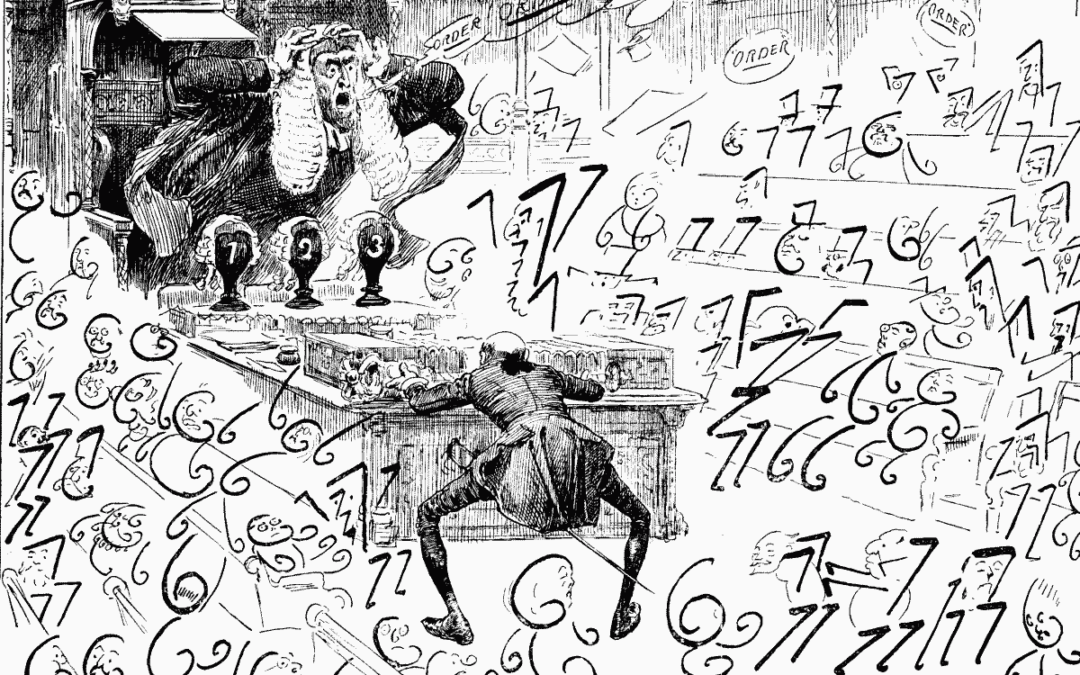
by Sandra Gulland | Jul 1, 2018 | Adventures of a Writing Life, Publication, The Game of Hope |
Last Tuesday was publication day in the U.S. for The Game of Hope. I told my husband that I’d been walking in circles all day. “I’m at sixes and sevens.”
He’d never heard the expression. I explained that it meant feeling out of sorts, disordered and in confusion.

In search of the origin of the expression “being at sixes and sevens”
Where had the expression come from? Certainly it makes no sense. There is nothing I like better than digging into history to find the origin of a curious expression, especially on a publication day when I am, in fact, at sixes and sevens.
And so, from Wikipedia:
An ancient dispute between the Merchant Taylors and Skinners livery companies is the probable origin of the phrase.The two trade associations, both founded in the same year (1327), argued over sixth place in the order of precedence. In 1484, after more than a century and a half of bickering, the Lord Mayor of London Sir Robert Billesden ruled that at the feast of Corpus Christi, the companies would swap between sixth and seventh place and feast in each other’s halls.
The two guilds, the taylors and the skinners, have continued to swap the sixth and seventh place to this day, resulting in seven centuries of confusion. Impressive.
Unlucky 13?
Another theory is that 6 + 7 = unlucky 13, but this seems a little simplistic to me.
Gambling away your life’s fortune?
A third explanation is that the expression originated in a 14th century game of dice: when betting on six and seven risked your losing entire fortune.
From Chaucer’s Troilus and Criseyde, 1374 — “Lat nat this wrechched wo thyn herte gnawe, But manly set the world on sexe and seuene.”
Given all this, my favoured explanation remains the ever-quarreling taylor and skinner guilds.There is nothing quite like a muddle that endures for centuries.
Part of the confusion about publication day for writers is that it is usually a quiet day, with little happening (especially if you live out of the country where your book is being published). There’s often quite a bit of commotion and stress leading up to that one day, and then bam! Nothing.
I am part of a wonderful fiction-writers’ collective; we support each other, consult about titles, covers, and various woes, but mainly we help broadcast news about member publications. As these posts started appearing on Social Media, I felt heartened: something was happening! I especially liked this post:
“Sandra hits the sweet spot, a book for young adults that adults of all ages can’t put down. And it’s fascinating.” — Martin Fletcher, author of The List, Jacob’s Oath, and a soon-to-be blockbuster Promised Land.
The Game of Hope in the Wild
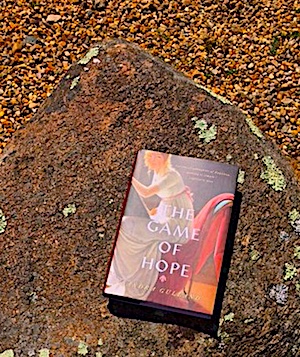
I also was greatly cheered receiving this photo taken in the US by Karen Salvatore, Evidence!
And now?

An ATM machine in New York city.
Half a week later, my husband and I are in New York/Brooklyn with our son, Chet, and his girlfriend, Kendra (daughter of Karen mentioned above).
We’ve been eating fabulous food, drinking fabulous drinks and having a merry time. On Monday I will lunch with my PenguinRandomHouse publicist, Jennifer Dee, and then go to Books of Wonder to sign some books
Some New York highlights, so far:

Dinner at Le Cou Cou. Delicious!!!
We followed this memorable meal with cocktails at Attaboy, considered one of the best cocktail bars in the world. (Check out this article in the New Yorker.) You wouldn’t guess its popularity from its secretive locked door.
 .
.

Inside was a small (very small!) dark bar with a lovely vibe. One tells the bar-tender — I would say drink creationist — the mood or flavour of the drink you have in mind, and are then surprised by an entirely original result. The cocktail I had was amazing!
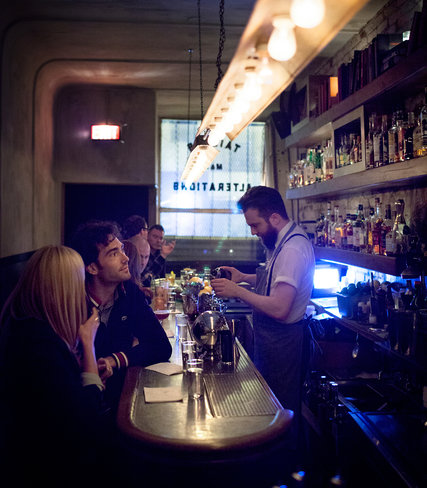 SaveSave
SaveSave
Follow this up the next day with a leisurely and supremely tasty brunch at Dumbo House (our son’s club), followed by a three and a half hour nap (!), followed by yet another delicious meal at Metta in Fort Green, Brooklyn, and I have to conclude that a foodie holiday in New York and Brooklyn is a perfect cure for being sixes and sevens.

SaveSave
SaveSave
SaveSave



















 .
.


